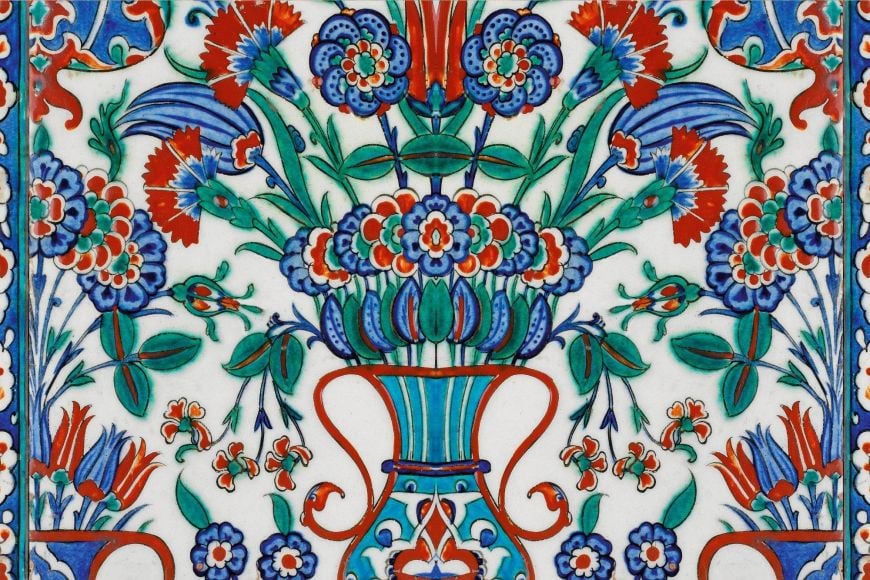Turkey, a country rich in history and culture, is home to diverse flora and fauna. Among the many beautiful flowers that grow in this region, the tulip holds a special place. The tulip, known as the national flower of Turkey, has a fascinating history and cultural significance that goes beyond its aesthetic appeal. In this article, we will delve into the significance of the Turkish tulip, its historical journey, and its role in Turkish culture and art.

The Turkish Tulip
The tulip, scientifically known as Tulipa, is a bulbous plant that belongs to the Liliaceae family. While many associate tulips with the Netherlands, their origins can be traced back to Central Asia, particularly in the regions that are now part of Turkey. The Turkish tulip, also known as the "Lale" in Turkish, is celebrated as the national flower of Turkey and holds a prominent place in Turkish horticulture and symbolism.
Historical Journey of the Turkish Tulip
The history of the Turkish tulip is deeply intertwined with the history of the Ottoman Empire. Tulips were cultivated in the Ottoman Empire as early as the 10th century. By the 16th century, tulips had become a significant symbol in the Ottoman court, particularly during the reign of Sultan Suleiman the Magnificent. The flower was so cherished that it gave its name to an entire era known as the "Tulip Era" or "Lale Devri" in the early 18th century, a period marked by peace, prosperity, and cultural flourishing.
During this time, the Ottoman elite indulged in the beauty of tulips, organizing grand tulip festivals and cultivating elaborate gardens. Tulips became a symbol of wealth and prestige, and their influence spread throughout Europe, eventually leading to the famous "tulip mania" in the Netherlands.
Cultural Significance of the Turkish Tulip
The Turkish tulip, known as "Lale" in Turkish, is not merely a flower but a potent symbol representing beauty, love, and life in Turkish culture. Its influence pervades various aspects of Turkish art, literature, and traditions, illustrating its deep-rooted significance.
Turkish Art and Architecture
Tulips have been a prominent motif in Turkish art and architecture for centuries, particularly during the Ottoman Empire. The flower's elegant shape and vibrant colors are frequently depicted in the intricate designs of Ottoman tiles, textiles, and ceramics. These art forms often feature tulips in repetitive patterns, symbolizing refinement and elegance.
Ottoman Tiles: The tulip is a recurrent theme in Iznik tiles, renowned for their rich blue and white designs. These tiles were used extensively in the decoration of mosques, palaces, and public buildings. The tulip motifs on these tiles are often stylized, showcasing the flower's beauty through geometric and abstract forms.

Textiles and Carpets: In Ottoman textiles, tulip motifs adorned fabrics used for clothing and home décor. These textiles, including luxurious silk and brocade, often featured tulips woven in vibrant colors, reflecting the flower's importance in daily life.
Ceramics: Turkish ceramics, especially those from the town of Kütahya, are known for their elaborate tulip designs. These ceramics, ranging from plates to vases, often display tulips as central decorative elements, celebrating the flower's cultural significance.
The tulip motif is also prevalent in the architectural design of Turkish mosques and palaces. In these structures, tulips appear in ornamental patterns carved into stone, wood, and metal, adding an element of grace and beauty.
Literature and Poetry
In Turkish literature and poetry, the tulip serves as a powerful symbol of love and beauty. For centuries, poets have used the image of the tulip to express deep emotions and sentiments.
Classical Poetry: Ottoman poets such as Fuzuli and Nedim often likened the tulip's delicate form and vibrant colors to the beauty of a beloved. The tulip's fleeting bloom became a metaphor for the transient nature of beauty and the intense, ephemeral nature of love.
Modern Literature: In contemporary Turkish literature, the tulip continues to inspire writers. Novels, short stories, and poems often include references to tulips, symbolizing a connection to Turkish heritage and cultural identity.
In Turkish literature and poetry, both classical and modern, the tulip symbolizes love, beauty, and cultural heritage, often used to convey deep emotions and the fleeting nature of beauty.
Festivals and Celebrations
The cultural significance of the Turkish tulip is celebrated annually during the Istanbul Tulip Festival, held each April. This festival showcases millions of tulips planted across the city's parks and gardens, creating a breathtakingly vibrant display.
Istanbul Tulip Festival: The festival not only highlights the beauty of the tulip but also serves as a reminder of the flower's historical and cultural importance in Turkey. Parks such as Emirgan, Gülhane, and Yıldız are transformed into colorful landscapes, attracting both locals and tourists. The festival features various events, including concerts, art exhibitions, and tulip-themed activities, celebrating the flower in all its glory.
Historical Significance: The Istanbul Tulip Festival also aims to revive the legacy of the Tulip Era (Lale Devri), a period in the early 18th century marked by peace, prosperity, and a cultural renaissance in the Ottoman Empire. During this era, the cultivation and appreciation of tulips became a symbol of sophistication and cultural refinement. The festival serves as a modern tribute to this golden age of tulip cultivation and the flower's enduring legacy.
Community Engagement: The festival involves community engagement, with schools, local businesses, and residents participating in planting and maintaining tulip gardens. This collective effort fosters a sense of pride and connection to Turkish heritage, emphasizing the tulip's role in community life.
The Role of the Tulip in Turkish Horticulture
The tulip has a special place in Turkish horticulture, with numerous varieties being cultivated and hybridized over the centuries. Turkish gardeners have developed a deep understanding of tulip cultivation, resulting in a rich diversity of tulip species.

Varieties of Turkish Tulips
Turkey is home to many unique varieties of tulips, each with its distinct characteristics. Some of the notable varieties include:
Tulipa armena: Known for its striking red petals and dark center, this variety is native to the eastern regions of Turkey.
Tulipa acuminata: Also called the "Fire Flame Tulip," this variety features long, pointed petals with red and yellow streaks.
Tulipa orphanidea: Found in western Turkey, this variety has delicate, bright orange flowers that bloom in early spring.
Cultivation and Care
Tulip cultivation in Turkey follows traditional methods passed down through generations. Gardeners pay close attention to soil quality, watering, and pest control to ensure healthy growth. Tulips are typically planted in the autumn, allowing them to establish roots before the winter. By spring, the flowers bloom in full splendor, adorning gardens and landscapes with their vibrant colors.
The Turkish Tulip in Modern Times
In modern Turkey, the tulip continues to be a beloved symbol and a source of national pride. The flower's legacy is preserved through various cultural and horticultural initiatives aimed at promoting its significance.
Tourism and Economy: The Turkish tulip plays a significant role in the country's tourism industry. The annual Istanbul Tulip Festival attracts thousands of visitors from around the world, boosting the local economy and promoting Turkey's cultural heritage. The export of tulip bulbs also contributes to the economy, with Turkish tulips being sought after for their unique varieties and quality.
Environmental Conservation: Efforts are being made to conserve wild tulip species in Turkey, many of which are under threat due to habitat loss and climate change. Conservation programs focus on protecting natural habitats and promoting sustainable cultivation practices. These initiatives aim to preserve the biodiversity of Turkish tulips and ensure their survival for future generations.
The Turkish tulip, as the national flower of Turkey, holds a special place in the hearts of the Turkish people. Its rich history, cultural significance, and horticultural importance make it a symbol of beauty, love, and national pride. From the gardens of the Ottoman sultans to the vibrant displays of the Istanbul Tulip Festival, the tulip continues to captivate and inspire. Understanding the significance of the Turkish tulip provides a deeper appreciation of Turkey's rich cultural heritage and its enduring love for this beautiful flower.
We are always ready to answer all your questions, please reach out via Whatsapp +90 (532) 158 42 44
If you want to emigrate or buy an apartment in Turkey or own a property in turkey and enjoy life by the sea, message our specialists who will find the best options for your budget.
Also, subscribe to our YouTube channel and Instagram page to receive information from the professionals!
An additional channel to connect with us: Telegram




